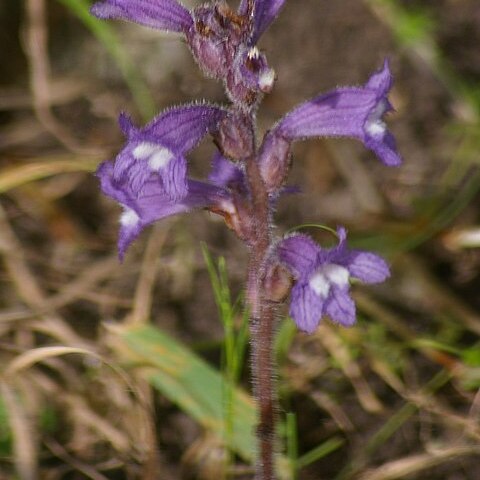A herb which grow attached to other plants. The stems are usually branched and swollen at the base. The leaves are scales and oval. The flowers are 20-35 mm long. They are blue or purple with white patches in the mouth. The anthers are densely hairy.

